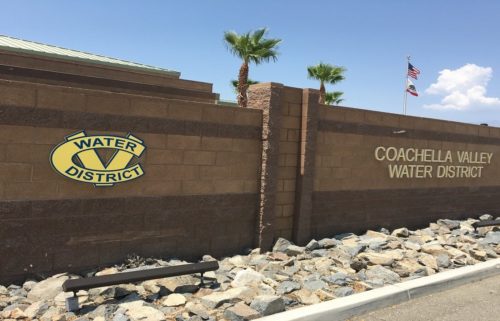Joshua Tree National Park feeling the drought
Joshua Tree National Park is one of the many sites affected by the state-wide drought. Water levels have drastically decreased and so have the efforts of reseeding young Joshua trees to thrive for future generations.
But those crooked branches facing skyward might as well be a personification of arms on a body praying for water. California is currently in its fourth year of severe drought and Joshua Tree National Park is seeing the dramatic effects.
“Right now the park looks lush and green compared to what it’s going to look like in another couple of months out here,” said Jason Theuer, the cultural resource branch chief at Joshua Tree National Park.
But now, the national park is at the mercy of rain, paired with the overall climate change in the past few decades. Over the last four years, precipitation levels haven’t come close to the normal 4.12 inches per year Joshua Tree is accustomed, and visually there’s a jarring difference.
Theuer explained the lower water levels at places like historical site Barker Dam leaves it vulnerable to more potential graffiti. A visitor of the park shared pictures of the dam from 2010 and their most recent visit in 2015. The comparisons were stunning. “It’s astounding. There’s no water. It’s gone,” said Robert Parnell. “Before, as my wife said, it was up to where the water lines are, you can see the discoloration. And now there’s nothing.” Parnell’s wife, Sabrina, added, “you hear about the drought in California, but this is the first time we’ve actually seen the results of it.”
According to a scientific paper titled Designing a sustainable monitoring framework for assessing impacts of climate change at Joshua Tree National Park published in August 2014, the drought paired with climate change has 23 potential species of wildlife vulnerable or likely vulnerable, including the Joshua tree.
Nearly 1.6 million visitors came to Joshua Tree National Park in 2014 alone, accounting for $97 million in the local economy. Tourists may be flocking in greater numbers to see the potential threat the Joshua tree faces, but Theuer believes the Joshua trees are just adapting to their new environment.
“You know, I think one of those myths that might be out there are ‘all the Joshua trees are dying, they’re all going to disappear. Hurry, come to Joshua Tree before they’re all gone.’ The Joshua Trees aren’t going to entirely disappear,” Theuer reassured. “We are the southern-most extent of Joshua Trees in the Mojave Desert and what we are seeing in some areas of the park is that we’re not getting that regeneration or recruitment of younger Joshua Trees to replace the old ones.”
Officials are more worried about wildfires amid the drought conditions. Dryness can lead to larger spread wildfires that destroy plant and wildlife and can take up to 60 years to revegetate the area. But with no rain, the feat becomes practically impossible.
“We’re low, but the reality of the situation is that California has experienced droughts in the past. If we look back on the last 5, 6, 7, 8, 10-thousand years, droughts come in cycles and it’s hit before.” Theuer added, “what we’re seeing now is this sort of exacerbation of the drought with climate change on top of it. Those average temperatures increasing with those reduced precipitation are sort of amplifying the effects.”
Park services have to be smart about what they water and where, such as young Joshua trees trying to survive the harsh conditions. But they also believe in letting nature take its course and not interfere with the natural process during the drought.



